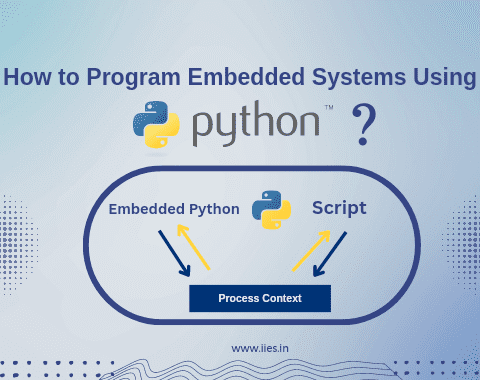
Computer systems known as embedded systems are those that are included in different products or gadgets. They are used in a wide range of applications, such as controlling the engine of a car, monitoring the vital signs of a patient, and regulating the temperature of a building.
Learning how to program embedded systems using Python requires a combination of theoretical knowledge and practical experience. Developers can find various resources online, such as books, tutorials, and forums, to help them learn and develop their skills in this area.
In this blog, we will discuss how to program embedded systems using Python.
Embedded systems are an important part of modern technology. They are designed to perform specific tasks and are optimized for performance, power consumption, and cost. They are typically used in applications where traditional computers are not suitable, such as in industrial automation, automotive, and healthcare.
Python is a popular programming language that is widely used for developing desktop applications, web applications, and scientific computing. It is also a great choice for embedded systems programming. Python provides a number of benefits for embedded systems programming, including:
Interpreted language: The Language that may be directly executed without the requirement for compilation is Python, which is an interpreted language.
High-level programming languages like Python are simple to read and write. It provides a number of data types, including integers, floating-point numbers, and strings. Python also provides control structures, such as if statements, for loops, and while loops. Both procedural and object-oriented programming paradigms are supported by Python.
To program embedded systems using Python, you will need a development board or microcontroller that supports Python. There are several options available, such as the Raspberry Pi, BeagleBone Black, and ESP8266. You will also need a computer with Python installed and an Integrated Development Environment (IDE) that supports Python.
The Python website’s official download and installation pages are free. You will also need to install additional tools, such as a serial terminal emulator and a toolchain for cross-compiling Python for your target platform.
Once you have installed Python and related tools, you will need to configure your environment. This includes setting up the development board or microcontrollers, configuring the IDE, and setting up the toolchain.
Python provides a number of data types, including integers, floating-point numbers, and strings. Variables are used to store data and can be assigned values using the assignment operator (=).
Control structures in Python include if statements, for loops, and while loops. These structures are employed to manage a program’s execution flow.
Functions are used to group a set of related statements together and are defined using the def keyword. Modules are used to organize functions and other code into separate files.
Debugging and testing are important part of the programming process. To debug Python code for embedded systems, you can use an IDE that provides debugging tools, such as breakpoints and watchpoints. To test embedded systems code, you can use a simulator or emulator that simulates the behavior of the target platform.
Python provides a number of libraries for interfacing with hardware, such as the RPi.GPIO library for the Raspberry Pi. These libraries provide an interface for controlling GPIO pins, I2C devices, and other hardware.
When a button is pressed or a sensor reads anything, interrupts are utilized to react. Event-driven programming is a programming paradigm that is used to respond to events in real time.
Real-time operating systems (RTOS) are used in embedded systems to provide deterministic behavior and response times. Python provides several RTOS options, such as Zephyr and Free RTOS.
Memory management is an important consideration in embedded systems programming. Python provides automatic memory management through garbage collection, but it is important to be aware of memory usage and to optimize code for memory usage.
A smart home system can be built using Python and a Raspberry Pi. The system can be used to control lights, temperature, and other home appliances.
A robotic arm can be developed using Python and a microcontroller. The arm can be programmed to perform specific tasks, such as picking up objects and moving them to a different location.
An autonomous car can be created using Python and a Raspberry Pi. The car can be programmed to navigate a course and avoid obstacles.
Code optimization techniques, such as reducing memory usage and minimizing code size, are important considerations in embedded systems programming.
Security considerations, such as protecting against unauthorized access and securing data are important in embedded systems programming.
Documentation and maintenance is important considerations in embedded systems programming. Code should be well-documented and maintained to ensure that it is easy to understand and modify.
In this tutorial, we have discussed how to program embedded systems using Python. We have covered the basics of Python programming, the advantages of using Python for embedded systems programming, and the steps for setting up a development environment. We have also covered basic and advance embedded systems programming concepts in Python, case studies and examples, best practices, and future trends and developments in embedded systems programming with Python. We hope this tutorial has been helpful in getting you started with embedded systems programming using Python.
Indian Institute of Embedded Systems – IIES